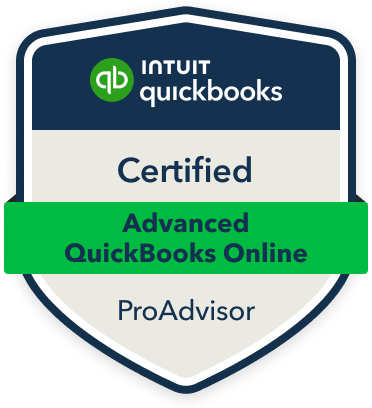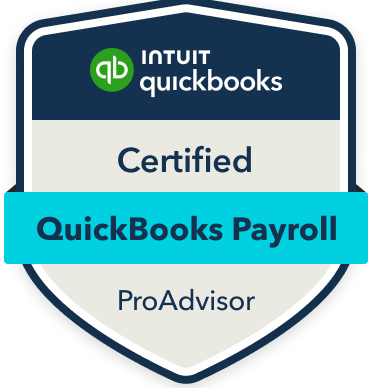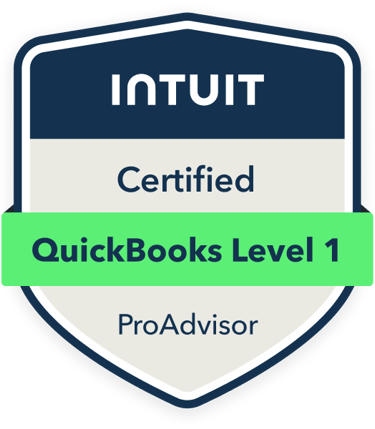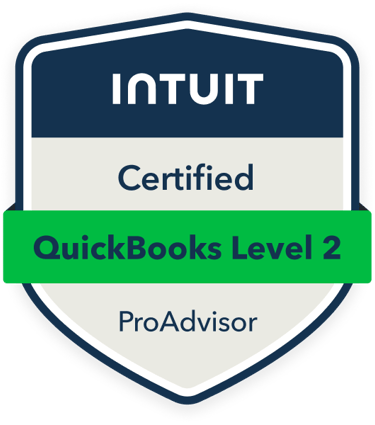Understanding Financial Statements: A Breakdown
Whether you're a seasoned entrepreneur or just starting out, getting a grasp on your balance sheet, income statement, and cash flow statement is essential. In this post, we'll break down these financial statements in a straightforward way, helping you make sense of the numbers and use them to your advantage.


Understanding Financial Statements
Financial statements are essential tools for understanding the financial health of your business. They provide insights into how your business is performing, where your money is going, and what areas may need improvement. However, for many small business owners and non-accountants, financial statements can seem intimidating and complex. The good news is that you don’t need to be a finance expert to grasp the basics. This post will walk you through the key financial statements—Balance Sheet, Income Statement, and Cash Flow Statement—breaking down each one in simple terms, so you can confidently interpret and use them to make informed business decisions.
The Three Key Financial Statements
The Balance Sheet: A Snapshot of Financial Position
The Income Statement: Tracking Profitability
The Cash Flow Statement: Following the Money
The Balance Sheet: A Snapshot of Financial Position
The balance sheet is like a photograph of your business’s financial position at a specific point in time. It shows what your business owns (assets), what it owes (liabilities), and the owner’s stake in the business (equity). The balance sheet is divided into three main sections:
Assets
Assets are resources owned by your business that have economic value. They are classified into two categories:
Current Assets: These are assets that can be converted into cash within one year. Examples include cash, accounts receivable (money owed to you by customers), inventory, and short-term investments.
Non-Current Assets: Also known as fixed or long-term assets, these are assets that are not expected to be converted into cash within a year. They include property, plant, equipment, and intangible assets like patents or trademarks.
Liabilities
Liabilities represent the obligations or debts your business owes to others. Like assets, liabilities are classified into two categories:
Current Liabilities: These are debts that need to be paid within one year, such as accounts payable (money you owe to suppliers), short-term loans, and taxes payable.
Non-Current Liabilities: These are long-term debts that are due after one year. Examples include long-term loans, bonds payable, and deferred tax liabilities.
Equity
Equity represents the owner’s claim on the business after all liabilities have been paid. It’s often referred to as the "net worth" of the business. Equity includes:
Owner’s Equity: For sole proprietorships and partnerships, this is the owner’s investment in the business plus any retained earnings (profits that have been reinvested in the business).
Shareholders’ Equity: For corporations, this includes common stock, preferred stock, additional paid-in capital, and retained earnings.
The balance sheet follows the fundamental accounting equation:
Assets = Liabilities + Equity
This equation must always be balanced, meaning the total value of your assets must equal the combined total of your liabilities and equity.
Why the Balance Sheet Matters
The balance sheet is crucial because it provides a clear picture of your business’s financial stability. A well-balanced sheet with more assets than liabilities indicates a strong financial position. Conversely, if liabilities exceed assets, it could be a warning sign of financial trouble.
The Income Statement: Tracking Profitability
The income statement, also known as the profit and loss (P&L) statement, shows your business’s financial performance over a specific period (such as a month, quarter, or year). It details your revenue, expenses, and profits or losses, helping you understand whether your business is making money or losing it.
Revenue
Revenue, also known as sales or income, is the total amount of money your business earns from selling goods or services. It’s the top line of the income statement and is the starting point for calculating profitability.
Revenue can come from various sources, including:
Operating Revenue: Income from your primary business activities, such as selling products or providing services.
Non-Operating Revenue: Income from secondary activities, such as interest on investments or the sale of assets.
Expenses
Expenses are the costs incurred to generate revenue. They are typically categorized into:
Cost of Goods Sold (COGS): Direct costs related to the production of goods sold by your business, such as raw materials and labor.
Operating Expenses: Indirect costs associated with running your business, including rent, utilities, salaries, marketing, and office supplies.
Non-Operating Expenses: Costs not directly tied to your core business activities, such as interest on loans or losses from the sale of assets.
Net Income
Net income, often referred to as the "bottom line," is the difference between total revenue and total expenses. It represents your business’s profit or loss for the period. A positive net income indicates profitability, while a negative net income signifies a loss.
Net Income = Revenue - Expenses
Why the Income Statement Matters
The income statement is vital for assessing your business’s profitability and operational efficiency. By analyzing revenue and expenses, you can identify areas where costs can be reduced or where revenue can be increased. It also provides valuable insights into your business’s financial health over time, helping you make informed decisions about future investments, cost management, and growth strategies.
The Cash Flow Statement: Following the Money
While the income statement shows profitability, the cash flow statement tracks the actual flow of cash in and out of your business. It’s divided into three main sections:
Operating Activities
This section shows the cash generated or used by your business’s core operations, such as sales and payments to suppliers and employees. Positive cash flow from operating activities indicates that your business is generating enough cash to sustain its operations.
Examples of cash inflows and outflows in operating activities include:
Cash Inflows: Receipts from customers, interest, and dividends received.
Cash Outflows: Payments to suppliers, employee salaries, rent, and taxes.
Investing Activities
This section includes cash spent on investments like purchasing equipment, acquiring other businesses, or investing in securities. It also includes cash received from selling these investments. Negative cash flow in this section isn’t necessarily bad if it’s due to investing in growth.
Examples of cash inflows and outflows in investing activities include:
Cash Inflows: Proceeds from the sale of assets, repayments of loans made to others.
Cash Outflows: Purchases of property, equipment, and investments in other businesses.
Financing Activities
This section tracks cash flow from borrowing or repaying loans, issuing or buying back stock, and paying dividends. It shows how your business is financed through debt and equity.
Examples of cash inflows and outflows in financing activities include:
Cash Inflows: Proceeds from issuing stock, taking out loans.
Cash Outflows: Repayment of loans, payment of dividends, repurchase of stock.
Why the Cash Flow Statement Matters
The cash flow statement is crucial because it shows whether your business is generating enough cash to cover its expenses. Even if your business is profitable on paper, poor cash flow can lead to financial difficulties. Understanding your cash flow helps you manage liquidity, plan for future expenses, and avoid cash shortages.
Bringing It All Together: The Interconnection of Financial Statements
Each of these financial statements provides valuable insights on its own, but they are even more powerful when used together. Here’s how they interconnect:
The Balance Sheet provides a snapshot of your financial position at a specific point in time, showing your assets, liabilities, and equity.
The Income Statement tracks your business’s profitability over a period, showing how your operations have impacted your equity.
The Cash Flow Statement reveals the actual cash movement, showing how cash from operations, investments, and financing activities has affected your overall financial position.
By analyzing these statements together, you can get a comprehensive understanding of your business’s financial health, identify potential issues, and make informed decisions that support long-term success.
Understanding financial statements is essential for any business owner, even if you’re not an accountant. The balance sheet, income statement, and cash flow statement each provide crucial insights into different aspects of your business’s financial health. By learning how to read and interpret these documents, you can make better decisions, avoid financial pitfalls, and set your business up for sustained growth and success.
Whether you're just starting out or looking to improve your financial management skills, taking the time to understand your financial statements is an investment that will pay off in the long run.








